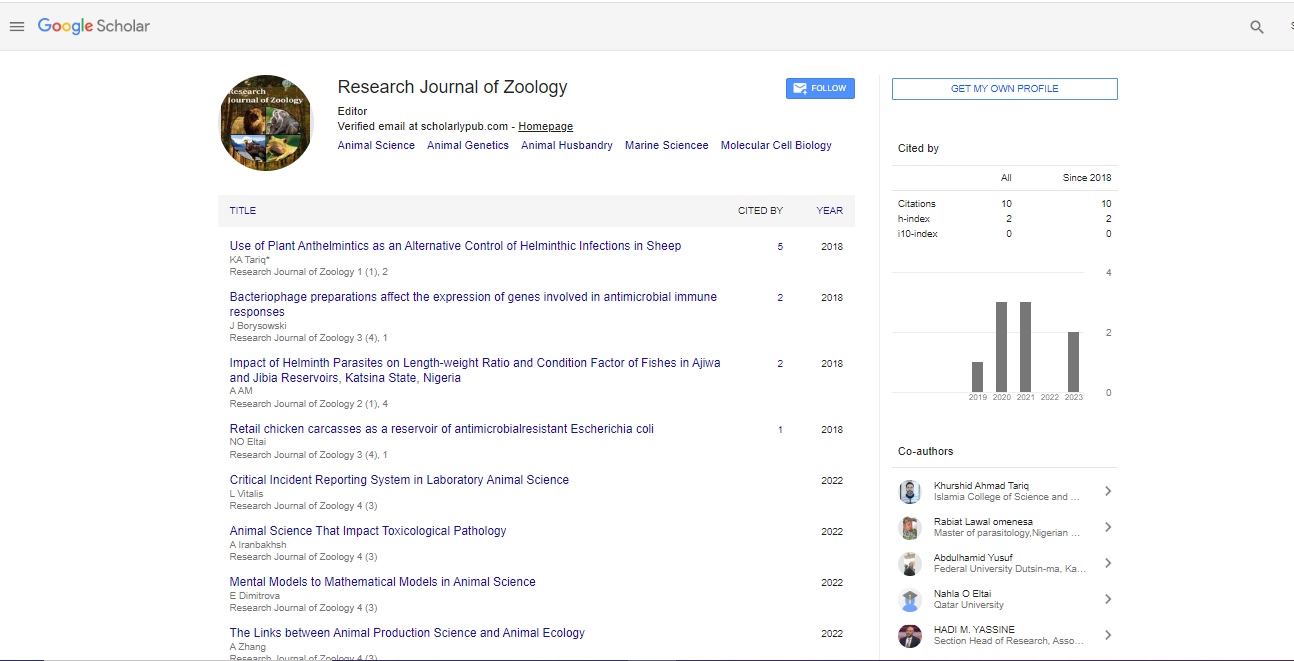Commentary, Res J Zool Vol: 5 Issue: 1
Gangrene: Causes, Types, Symptoms and Treatment
Ferd Rayan*
Department of Clinical Pathology, University Airlangga, Surabaya, Indonesia
*Corresponding Author: Ferd Rayan
Department of Clinical Pathology
University Airlangga, Surabaya, Indonesia
E-mail: ferdrayan@gmail.com
Received date: 20-Feb-2023, Manuscript No. RJZ-23-95684;
Editor assigned date: 22-Feb-2023, PreQC No. RJZ-23-95684 (PQ);
Reviewed date: 09-Mar-2023, QC No. RJZ-23-95684;
Revised date: 16-Mar-2023, Manuscript No. RJZ-23-95684(R);
Published date: 23-Mar-2023, DOI: 10.4172/Rjz.1000080.
Citation: Rayan F (2023) Gangrene: Causes, Types, Symptoms and Treatment. Res J Zool 5:1.
Description
Gangrene is a serious medical condition that occurs when body tissue dies due to a lack of blood supply. It can affect any part of the body, but most commonly occurs in the extremities, such as the fingers, toes, feet, and legs. Gangrene can be caused by various factors, including infection, injury, and underlying medical conditions.
Causes
Reduced blood flow: Reduced blood flow can occur due to damage to blood vessels caused by injury, trauma, or surgery. Conditions such as atherosclerosis, where arteries become narrowed and hardened due to plaque buildup, can also result in reduced blood flow to certain areas of the body, increasing the risk of gangrene. Infection: Infection can cause gangrene by invading and destroying the healthy tissue. Bacterial infections, such as those caused by Clostridium species or Streptococcus species, can rapidly spread and cause tissue death. Diabetes: Individuals with diabetes are at an increased risk of developing gangrene due to poor blood sugar control and impaired blood flow to the extremities. Diabetic neuropathy, which damages nerves and reduces sensation in the feet and legs, can also increase the risk of injuries that can lead to gangrene.
Types of gangrene
Dry gangrene: In dry gangrene, the affected tissue becomes dry, shrunken, and dark in color. It usually occurs in the extremities, such as the toes or fingers, and is often caused by reduced blood flow due to conditions like atherosclerosis. Dry gangrene is typically not associated with infection and may progress slowly.
Wet gangrene: Wet gangrene occurs when the affected tissue becomes moist and may appear black or greenish. It is often associated with infection, and bacteria can rapidly multiply in the dead tissue, leading to further tissue damage and sepsis, a life-threatening condition.
Gas gangrene: Gas gangrene is a severe form of gangrene caused by infection with Clostridium bacteria, which release toxic gases that can destroy tissue. The affected tissue may appear swollen, dark, and may produce a foul odor. Gas gangrene can progress rapidly and requires urgent medical attention.
Symptoms of gangrene
The symptoms of gangrene can vary depending on the type and stage of the condition.
Discoloration: The affected area may appear pale, bluish, black, or greenish, depending on the type of gangrene.
Pain: Initially, there may be pain in the affected area, which may progress to severe pain or complete loss of sensation as the tissue dies.
Swelling: Swelling, redness, and warmth may be present in the early stages of gangrene, especially in wet gangrene or gas gangrene.
Blisters or sores: Blisters or open sores may develop on the skin surface, which can leak fluid or pus in cases of infection.
Foul odor: In cases of gas gangrene, the affected area may produce a foul-smelling odor due to the release of toxic gases by the bacteria.
Systemic symptoms: In severe cases, gangrene can cause fever, rapid heartbeat, low blood pressure, and other signs of infection or sepsis.
Treatment
The treatment of gangrene depends on the type, severity, and underlying cause of the condition. The primary goal of treatment is to remove the dead tissue, control infection, and restore blood flow to the affected area.
Surgery: Surgical intervention is often necessary to remove the dead tissue and prevent the spread of infection. The type of surgery may vary depending on the extent of gangrene and the location of the affected area. In some cases, a small area of dead tissue may be removed, while in severe cases, amputation of the affected limb may be necessary to save the person's life.
Antibiotics: If the gangrene is associated with an infection, antibiotics may be prescribed to control the infection. The choice of antibiotics depends on the type of bacteria causing the infection and may require intravenous administration in severe cases.
Hyperbaric oxygen therapy: Hyperbaric oxygen therapy involves breathing pure oxygen in a pressurized room or chamber, which helps to increase oxygen delivery to the tissues and promote healing. It may be used as an adjunct therapy in certain cases of gangrene to improve wound healing and reduce the risk of amputation.
 Spanish
Spanish  Chinese
Chinese  Russian
Russian  German
German  French
French  Japanese
Japanese  Portuguese
Portuguese  Hindi
Hindi 
